Play it Safe: 10 Do’s and Don’ts When Using Portable Generators
By Abby Berry
Storm season is upon us, which means greater potential for power outages. If you’re planning to use a portable generator in the event of an outage, KEC reminds you to play it safe.

With proper use and maintenance, portable generators can provide great convenience during an outage. However, when generators are used incorrectly, they can be extremely hazardous. In a 2022 report, the Consumer Product Safety Commission estimated 85 U.S. consumers die every year from carbon monoxide (CO) poisoning caused by gasoline-powered portable generators.
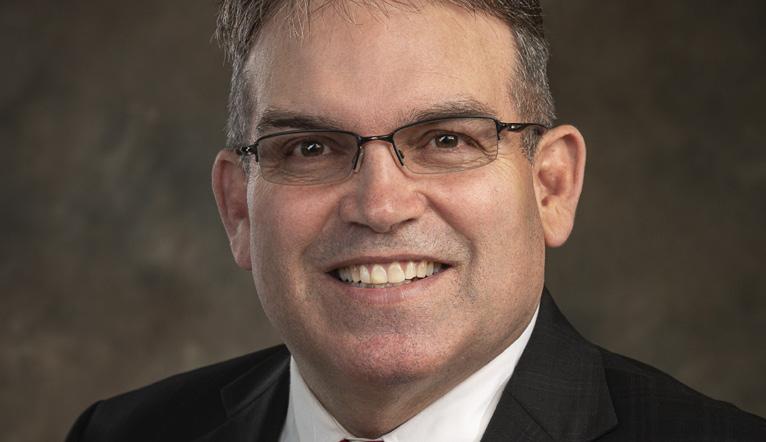
Here are 10 do’s and don’ts to keep in mind when using portable generators:
1. DO: Install backup CO alarms.

2. DO: Keep children and pets away from portable generators at all times.
3. DO: Position generators at least 25 feet outside the home, away from doors, windows and vents that can allow CO to enter the home.
4. DO: Ensure your generator is properly grounded. Use a portable ground fault circuit interrupter (GFCI) to prevent electric shock injuries.
5. DO: Use three-pronged extension cords that are rated to handle the load of the generator. Inspect extension cords for cuts, frays or other damage before use.
6. DON’T: Operate a generator inside
your home or an enclosed (or partiallyenclosed) space. Generators produce high levels of CO, which can be deadly.

7. DON’T: Open windows or doors while the generator is running.
8. DON’T: Rely on generators as a fulltime source of power. They should only be used temporarily or in emergency situations to power essential equipment or appliances.
9. DON’T: Overload generators. They should only be used to power essential equipment. Make sure your generator can handle the load of the items you plan to power.
10. DON’T: Connect generators directly into household wiring unless you have an appropriate transfer switch installed. If a generator is connected to a home’s wiring without a transfer switch, power can backfeed along power lines and electrocute utility lineworkers making repairs.
While generators provide convenience during power outages, they can quickly become hazardous––even deadly––if improperly operated. Before you operate a portable generator, be sure to thoroughly read the owner’s manual for important safety information and tips.
If you have questions about proper use of portable generators, we’re here to help. Give us a call at (918)465-2338 or visit www. kiamichielectric.org.

2 Scholarship application available now 2Your Bill’s Service Availability Charge 3 Meet KEC’s first female board member
Published for members of Kiamichi Electric Cooperative the
LIGHT POST
MARCH 2023
Abby Berry writes on consumer and cooperative affairs for the National Rural Electric Cooperative Association, the national trade association representing more than 900 local electric cooperatives. From growing suburbs to remote farming communities, electric co-ops serve as engines of economic development for 42 million Americans across 56% of the nation’s landscape.
944 SW Highway 2
PO Box 340
Wilburton, Oklahoma 74578
(918) 465-2338 | (800) 888-2731
BOARD OF DIRECTORS
Ron Pelaconi, President
DISTRICT 3
Russell Shaw, Vice President DISTRICT 1

Amy Miller, Treasurer DISTRICT 2
David Ray DISTRICT 4
Don Parr DISTRICT 5
Mark Ichord
DISTRICT 6
Larry Culwell
DISTRICT 7
KEC SENIOR STAFF
Brett Orme
EXECUTIVE VICE PRESIDENT — CEO
Linda Baldwin
EXECUTIVE ASSISTANT



Crystal Butler
CHIEF FINANCIAL OFFICER
Dennis Dolan
MANAGER OF OPERATIONS
Andy Eakle
MANAGER OF ENGINEERING
Sharla Ivy
MANAGER OF PROCUREMENT
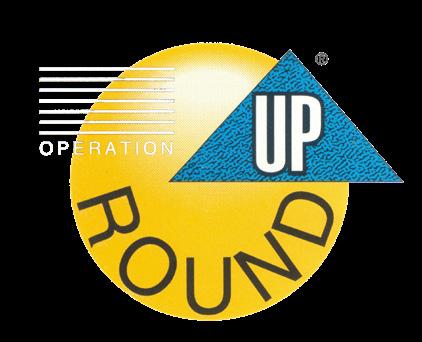
Michelle Warmuth
MANAGER OF MEMBER & PUBLIC RELATIONS


Heather Ziverk MANAGER OF MEMBER SERVICES
As a member of KEC, you make an investment in the co-op every time you pay your bill. This collective investment in the co-op benefits you and the community immediately and over time. So what exactly is this monthly investment, and how do you benefit from it?
The service availability charge is a monthly investment that helps your co-op cover the expenses of maintaining the overall electric system. Combatting cyber security threats and maintaining poles, wires, substations and co-op equipment takes strategic planning and significant resources. The service availability charge essentially ensures that all equipment operates properly and staff is trained and ready so the lights turn on when you need them.
Regardless of how much electricity a particular family uses, the cost of delivering power to that house is the same. As a not-
Brett Orme General Manager
for-profit electric cooperative, we believe the operational costs should be spread fairly and equitably across all of our members, regardless of the level of electricity use. That is why every member pays the service availability charge each month to cover basic operational costs. All members are charged the same amount for the cost of operation since all members benefit from the same service. In essence, this gives each co-op member an equal share in KEC’s operation.
Your monthly investment ensures you have access to safe, reliable and affordable power when you need it. We appreciate and value the investment that you make in the co-op each month, and we strive to use that investment wisely for the benefit of all members of our community.
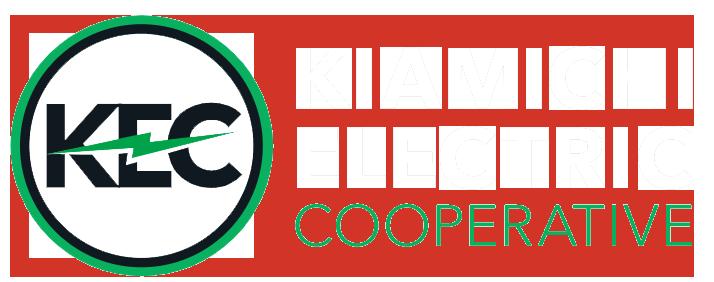
To learn more about the service availability charge, please visit www. kiamichielectric.org.

www.kiamichielectric.org COLLEGE STUDENTS: Apply now for the ORU Scholarship! Use your smartphone’s camera to scan this code and access the ORU Scholarship application & criteria!
Q&A with KEC’s first female board member, District 2 Director Amy Miller
Where did you grow up?
I grew up in Heavener, Oklahoma. My parents and grandparents are from LeFlore county, so we have strong roots here. Tell us a little about your family -
I am blessed with my parents, two younger brothers, and my beau Tim whom I’m teaching to fish. I have three children: two boys and a girl. My daughter is 21, and my boys are 25 and 19. My youngest was diagnosed early as a high functioning autistic and keeps me on my toes trying to explain innuendos and inferences.
What are some of your hobbies and interests?
I discovered how much I enjoyed the fire service when they built a fire station next to my house. My other hobbies are lazy fishing (I don’t care what I catch), construction (working on a fishing/ retirement cabin with my sweety), reading crime novels, and Netflix.
Where did you attend school?
I attended and graduated from Heavener High School. Then I completed the OSU Fire Service Training and the International Fire Service Accreditation course for firefighters and Instructor Certification.
I am studying Occupational Health and Safety and will complete a degree in Organizational Leadership. Walk us through your resume -
I worked in general industry in LeFlore county until my second child was born and then stayed at home with my children until they were big enough not to need me as much. By that time, I was in the fire service and became an adjunct instructor teaching firefighting, CPR, and industry curriculum for CareerTech and fire departments.

Tell us about your day job -
I work as a field representative for Verisk Analytics in the Mitigation ISO division. Verisk is a very forward-thinking, responsible company to work for, and I couldn’t be happier. I and others like me across the United States evaluate communities, fire departments, water systems, and call centers or 911 systems. That information is compiled, and a score is assigned that is approximately 1/3 of most homeowners insurance policy costs. I love my job because they pay me to look at fire trucks and “yap” fire with my brother and sister firefighters.
What do you think is required to be a good board member?
To be a good board member, you must be reliable, willing to learn, adjust and define policy procedures, ask the right questions, or find somebody that knows the right questions to ask. You have to look into the future and make the decisions that will provide the membership with reliable electricity tomorrow and in the foreseeable future while accounting for government demands to produce green energy. What is the training related to becoming a board member?
There are multiple levels of certification from NRECA. I joined the board in 2019 and completed the CCD level of training. This included,
• Director Duties and Liabilities
• Understanding the Electric Business
• Board Operations and Process
• Strategic Planning
• Financial Decision-Making Training should continue throughout life, and I look forward to enhancing my knowledge further.
Learn more about Amy in next month’s Light Post!
operation round up
MONTHLY UPDATE

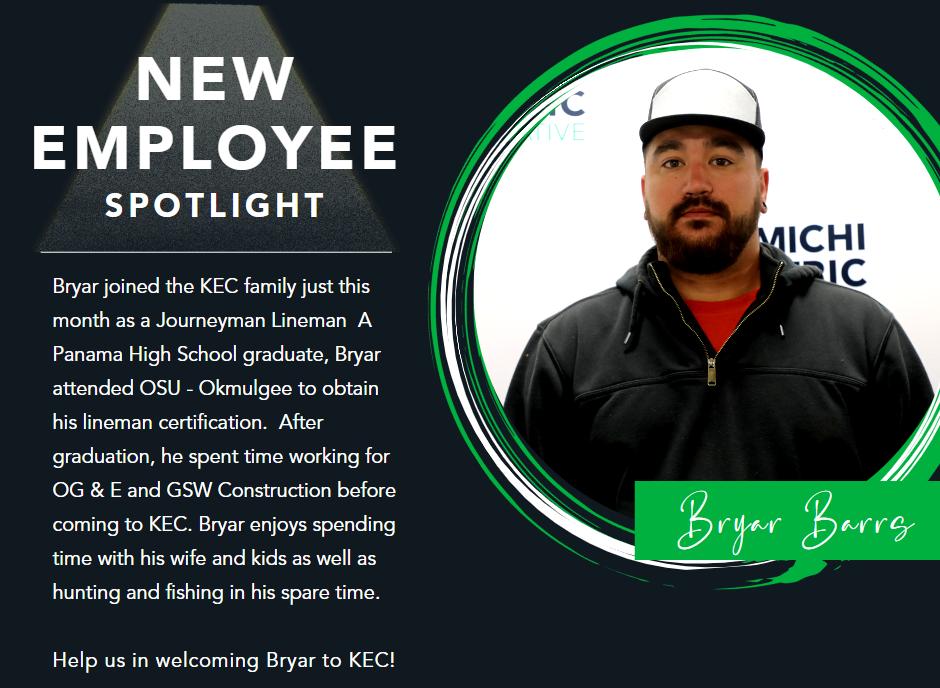
Operation Round Up® is a voluntary bill roundup program that benefits local communities, organizations ,and needy families. Funding applications are available at Kiamichi Electric, local social services, or online at www.kiamichielectric.org.

YEAR-TO-DATE COLLECTIONS: $76,115

TOTAL DISBURSEMENTS SINCE INCEPTION: $1,766,100
TOTAL COLLECTED SINCE INCEPTION: $1,838,177
Energy Efficiency Tip of the Month

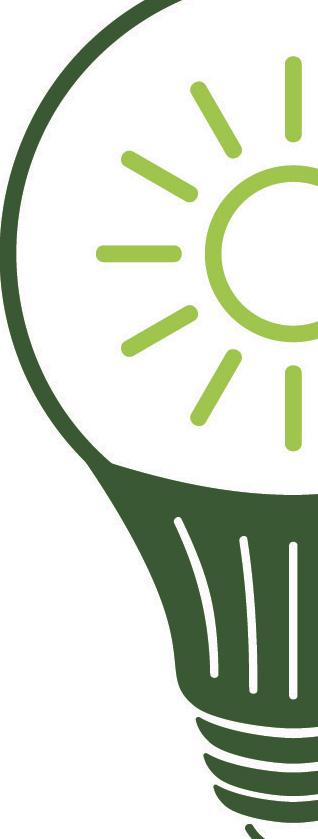
Washing windows and screens is a great way to practice energy efficiency during spring cleaning. Clean windows and screens make your home brighter by allowing more sunlight in, reducing the need for lamps and fixtures. Clean screens also allow more fresh air in the home when the windows are open to recycle indoor air. Natural light and clean air are energy savers, and they enhance overall health and productivity.
Blueberry Cream Cheese Wontons
INGREDIENTS
• ½ (8 ounce) package cream cheese
• 48 wonton wrappers
• 1 cup blueberry pie filling
DIRECTIONS
• water as needed
• cooking spray
• ¼ cup powdered sugar
Cut 4 ounce block of cream cheese in half, then in half again to create 4 pieces. Further cut each piece in half again so you have 8 equal pieces total. Set aside. Working with 6 wonton wrappers at a time, separate them out onto a clean work surface. Divide one of the cream cheese pieces into 6 pieces and place a piece in the middle of each wonton wrapper. Place 1 teaspoon of blueberry pie filling over the top of the cream cheese. Do not overfill, as the mixture may ooze out.
Use your finger to lightly wet the 4 edges of each wonton wrapper. Gently fold in half diagonally to make a triangle, then bring up the remaining two corners so all corners join together. Try not to leave excess air in the wonton, which can cause them to burst. Press seams together to ensure a tight seal. Set wontons aside, covered in a damp paper towel, while you finish making the remaining wontons.
Preheat the air fryer to 325 degrees F (160 degrees C). Spray the inner basket with cooking spray and place as many wontons in basket as will fit, without overcrowding. Lightly mist wontons with cooking spray.
Air-fry for 5 minutes. Remove to a cooling rack and dust with powdered sugar. Let cool while you cook the remaining wontons in batches. Best served slightly warm or at room temperature.
Recipe from AllRecipes.com





















